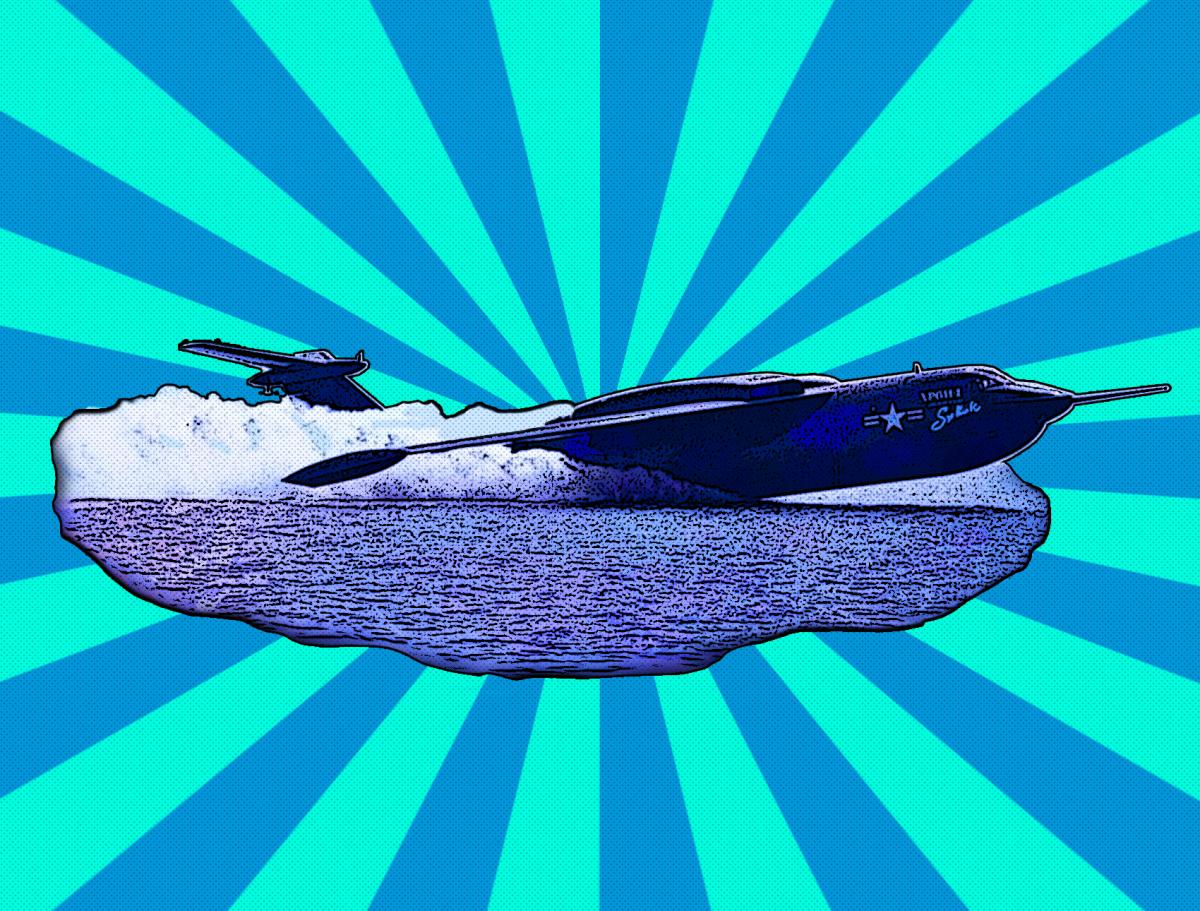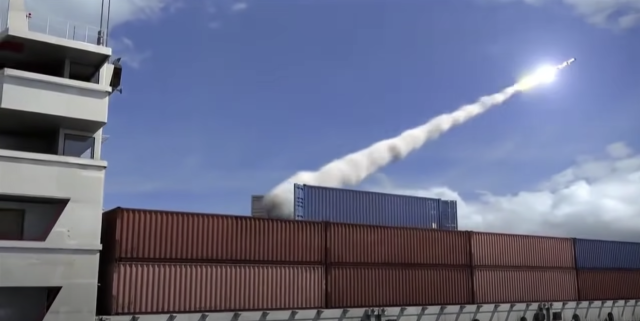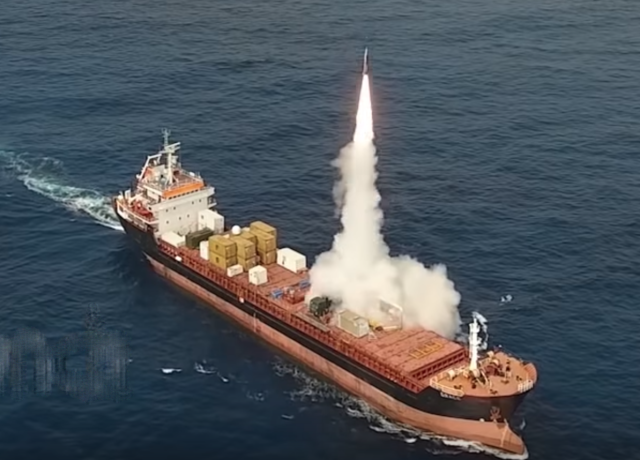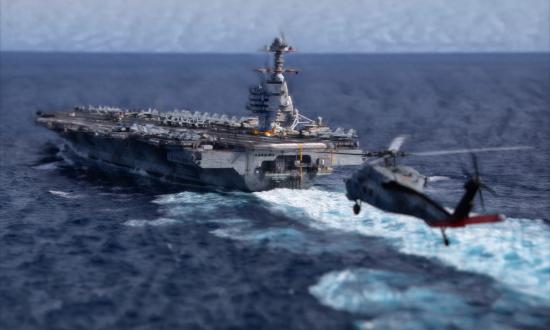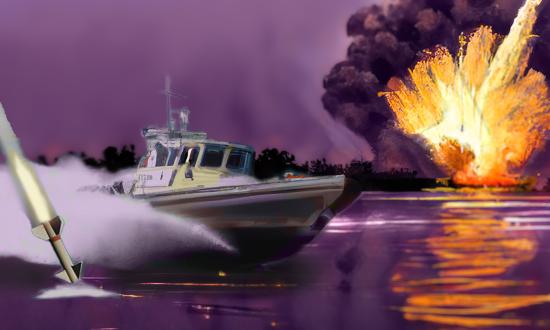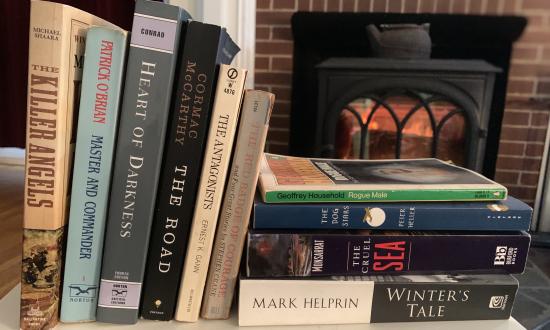M/V Liberty Georgia
Western Pacific, east of Japan
The tone spurred wakefulness, causing him to sit bolt upright and grab for his comm.
He managed to settle his augmented reality headset into place as the bright cabin lights snapped on, forcing himself not to squint long enough for the retinal scanners to verify his identity. While he was well practiced in navigating the interface, the offending message immediately came to the forefront, overriding his typical loading preferences.
“The fuck…” He breathed, staring at the orders for a moment before rising from bed. A glance at the time showed him he was getting shorted an hour of sleep. Nothing to be done about that now. He pulled up the ship’s current position and the comm.
“Bridge here, Captain.” 3rd Mate Siemens responded at once.
“Kayla, sending updated nav plan. Please implement immediately.”
“Yes, Captain, right away. Did we pick up another job?”
“Sort of, fill you in later.”
“Yes, Captain.”
Captain Collins dressed quickly and stepped into the p-way, confirming the location of Chief Mate Cota on his augmented reality display as he walked, finding him instructing the deck cadet on powered capstan maintenance at aft mooring. Seeing him approach, Cota patted the man on the back and walked over to the shade provided by the step of the aft container deck. They were light on this leg, carrying mostly empty boxes up forward.
“Captain, wasn’t expecting to see you back here.” Carlos said, wiping his hands on a rag before shoving it back into his coveralls. “Did I miss a call?”
“No, figured I’d come back and talk in person.” Collins smiled as his chief mate settled his headset back into place. Carlos had the habit of pushing the headset out of place when he was giving out instructions to his people, occasionally missing low priority calls.
“We just got an activation order.” Carlos raised an eyebrow at that as the captain continued. “As soon as we pull into Yokohama, they’re going to have our Navy augment and load out.”
“You thinking another fuck up?” Carlos asked, referencing the mistaken activation of one of their sister ships, Liberty Ohio, months back. The program officer had been relieved of command, lack of confidence and all that, making Collins glad he was just a reserve commander these days, not chasing his next up-or-out promotion.
“Who knows, if so, they’ve decided to double down instead of cancel. I’ve started to see manifests rolling in, looks like a serious load out.”
11 October – 09:00
M/V Liberty Georgia
Yokohama, Japan
Collins drummed the bridge wing as he watched the cranes work, lifting Liberty program modules into his container hold. The Liberty program had been created as a surge naval capacity, producing containerized missile modules, VLS, UNREP and FAS gear, hangars, and other hardware that locked into standard container locks and lashing systems or replaced hatch covers. Stored across U.S. and allied ports around the Indo-Pacific, they could be quickly loaded onto any containership, turning it into a distributed maritime operations asset. Once networked, naval vessels and joint force aircraft could provide targeting and call on their weapons as needed. Liberty Georgia and her sister ships had been constructed in U.S. shipyards, largely as a jobs program, but also to secure U.S. flagged ships under contract for national contingency operations. With sixteen ships built already and two per year floating out of the yards, it was the largest commercial buildup in decades. Collins and his crew were mostly specially designated naval reservists, typically activated twice a year, along with their ship. To be activated twice in three months was . . . unusual.
“Captain?” Kayla poked her head out. “Navy crew augment is here.”
“Thank you, Kayla. It’ll be a shame to lose you, but at least you’ll get some paid leave in Japan.”
“I’ll miss you all, of course, but happy enough to not be aboard with those.” Kayla gestured to the 32-cell MK-41 module being lowered into number two hold. She wasn’t a naval reservist, an exception on the crew. Collins just nodded as she ducked back inside. He frowned watching his ship being loaded with a decidedly lethal cargo.
16 October – 05:00
M/V Liberty Georgia
Balabac Strait
It wasn’t a training mission, that much was clear.
Collins glanced across the water, his headset adding details to the convoy assembled around him including four Liberty ships. Just ahead, USS Constellation led the formation, her radar active and on the lookout for any Chinese PLA Navy (PLAN) snoopers. Her Seahawk was farther ahead, just on the horizon, dropping a fresh sonobuoy chevron. His own ship had been assigned a pair of MH-60 Romeos that had just touched back down. They’d driven away a PLAN Yuan-class submarine in the night, lashing her with active pings from their dipping sonars.
Collins was still unsettled. His new XO, LCDR Serena Hill, had digitally hand carried their orders. The USS Constellation (FFG-62) supported by the USS Pittsburgh (LPD-31) and the convoy were to move north from the Sulu Sea, after traveling down the eastern coast of the Philippines, and bring additional hardware to Taiping Island. The Taiwan government had given the green light to land. A Marine littoral regiment out of Singapore had already jumped across, landing their antiship and short-range air defense missiles on the island. Political rhetoric was heating up to a boil and the PLAN Liaoning battlegroup had pushed into the area. The Chinese carrier-borne aircraft had been making aggressive moves in the convoy’s direction, though without shooting. Yet. The USS George Washington (CVN-73) strike group was steaming in the Celebes Sea, but Collins didn’t expect her to stay there long. That pond was too cluttered, though commercial traffic was already rerouting clear of this whole area. Everything seemed to be spiraling, and, for the life of him, Collins couldn’t figure out what the diplomatic types were doing. He just hoped they’d be able to resolve things before the real shooting started. If the convoy wasn’t turned around soon, it seemed shooting would be inevitable. A hundred or so Marines and their gear were problematic enough. Nearly two dozen ships and hundreds more U.S. personnel on PRC-claimed territory, at the request of the Taiwanese government, would be something else.
“All ships, all ships, expect imminent action. Command indicates PLAAF bomber sortie from Hainan on a southeasterly heading.”
“Lieutenant Nixon, let’s lean into it. Get everybody up and prepare to support Constellation. I expect they’ll be needing our missiles if those bombers come this way. And make sure the Safe is good to go.”
16 October – 06:48
M/V Liberty Georgia
South China Sea
“Well, they’re coming for us.” Serena remarked.
“Indeed.” Collins glared at the tactical display as twenty supersonic missiles tracked for them, visible thanks to the networked sensor feeds from Constellation and airborne ISR. The sensors identified the inbound missiles as YJ-12 antiship missiles. Collins was glad the strike commander had decided their group of merchants and only two “real” warships weren’t worth their full missile load. Precision missiles were a precious commodity. He glanced around the armored combat information center (CIC) were they all stood—one of many modules loaded in Yokohama. From here, they could control the entire ship, and the heavy armor around them was supposed to protect from anything save a direct hit. Given the commercial nature of the rest of the ship, any other compartment would not be particularly safe under fire. There was a second module in the bow, containing the rest of the crew and providing some redundancy for the weapons control. Liberty Georgia didn’t have any ability to self-target, beyond her SeaRAM, but there was still a human aboard in-the-loop for every launch.
“Commander Hill, please unlock the safeties on our weapons. Let’s make sure we’re ready to answer mission tasking.”
“Yes, sir, unlocking weapon safeties.”
Aft of CIC, SeaRAM came to life, manually tracking to the north though still in safe mode. Floating IR decoys were dumped overboard to obscure the tactical picture. Around her, other ships prepared themselves as well. Liberty California, another of their sister containerships, lofted her decoy blimps. The blimps’ RF units and radar reflectors becoming appealing targets. Pittsburgh, meanwhile, launched her airborne-early-warning (AEW) variant MV-22 Osprey, which clawed hard for altitude. The operators fired up her miniature but powerful radar, feeding the data into the net. The Osprey needed to get astern of the group to ensure she wouldn’t get caught in the crossfire.
“Captain, Constellation requesting direct fire control.”
“Give it to them. Fire control, you are seconded to Constellation.” They didn’t have many missiles but most of what they did were Standards. Almost immediately after the encrypted command link was confirmed, orders came across. Six SM-2s roared away from the ship, speeding downrange in loose formation. They were joined by missiles from two other Liberty ships in the group. Collins could see they were all SM-2s. Constellation held fire herself, retaining her full missile load. Minutes passed and both clusters of missiles ate the distance rapidly. While the SM-2s had only half the numbers and a small cross section to target, they were still able to down eight inbound YJ-12s. The surviving Chinese missiles were undeterred, pressing on and beginning to spread as they approached the convoy.
“Point defense free.” Collins ordered, freeing SeaRAM to engage any missiles coming for Georgia. As he did, Pittsburgh’s launcher opened up, sending a salvo of two RAMs. Constellation fired in her own defense as two missiles homed on her radar. Liberty California’s decoys attracted four more.
The sigh of relief was audible, though Collins couldn’t tell who uttered it, as the missile tracking Georgia was downed. Liberty Nevada was less lucky, her SeaRAM having managed only to engage the third missile successfully. A RAM winged the second but not in time, the missile still detonating in her superstructure.
“Fuck.”
The untouched missile struck Liberty Nevada amidships, tipping down into the deck and burying deep into the hull before detonating next to the MK 41. Secondary explosions ripped through the ship. Collins grimaced imagining the shearing metal. On the port bridge camera, he saw the ship falter, engine dying as systems failed under the shock. The entire ship shuddered to a halt and a torrent of seawater rushed into the cargo holds perforated by secondary explosions.
Collins saw the reports on the net, extensive fire and flooding. No deaths reported but numerous injuries. Everyone had been inside a Safe. The hits on Nevada were powerful, but all told they had come through mostly intact. If that was all they had to deal with, they might complete their mission and get out alive.
“Submerged contact, bearing one-eight-five. Range, ten miles. Constellation says Yuan class making turns for six knots.” Collins silently cursed his premature celebration as the warning came over the net, Constellation’s ‘tail’, her towed-array sonar, making the detection.
Constellation’s captain wasted no time ordering California, the closest ASROC-armed ship, to launch on the submerged contact. A moment later, orders came for a Seahawk to get airborne. Two ASROC erupted from California. Speeding downrange and undergoing rapid disassembly upon reaching the target, their torpedoes were deposited, bracketing the submerged contact. Simultaneously, shapes burst from the water.
“She launched, inbound missiles.”
The Yuan launched a triplet of antiship missiles as she detected the torpedoes bracketing her, aborting further launches. The submarine went to emergency blow, but it was too late. The MK 54 torpedo to port found her before completing the first search circle, tracking into the submarine’s stern near the prop. Its partner followed a moment later to finish off the wounded boat even as her crew tried in vain to surface.
In the meantime, on the surface, four ships scrambled to react to the threat in their midst. Two missiles found the already damaged Nevada, tearing into her stern section and crumpling shell plating. The third targeted the broadside of Georgia.
“Hard to port, bring up the thruster.” Collins ordered, trying to unmask SeaRAM but knowing it was too late, even though it was barely masked. The warning gong sounded, the XO hitting the bell on instinct as she realized they couldn’t avoid the hit. Before the first tone finished, it struck. Everyone grabbed their consoles to keep their footing. Collins noted the shock wasn’t as large as he’d expected. Liberty Georgia displaced nearly fifty-thousand tons, lightly loaded as she was. The warhead just didn’t have enough power to rock them seriously.
“Report.”
“Fire in number one hold. Sprinkler systems unresponsive. Bow fire monitor is working, the bow Safe has it working on the fire. Main power still online. Looks like we also lost a 25-millimeter gun, Captain.”
“Very well. Keep an eye on the flooding. We’ll reballast if we take on too much.”
He noticed his XO frown, but she didn’t say anything. He knew she was familiar with the Liberty ships, but it was still difficult, in his experience, for the career Navy types not to send a damage control party immediately when the ship was damaged, on fire, and being flooded from the efforts to extinguish. On these ships, the crew were supposed to stay in their armored Safes because the ship could take on hundreds of tons of seawater without issue. The containerized mission set they’d been loaded with was not even a quarter load for the ship. A bit of seawater in their forward hold wasn’t something they needed to deal with until after the fight.
Far above the captain and his musings, the AEW Osprey continued tracking the PLAAF strike force as it tracked back north.
16 October – 07:31
Amphibious Strike One
Somewhere in the South China Sea
“Hello, beauties, we’ve been waiting for you.” Commander Valerie Cunningham smiled as she viewed the tracks still being fed to them over the net of the PLAAF bombers returning from their strike. Her command had been sitting on the surface for more than a day, waiting for the balloon to go up. It had been a nervous day, waiting to see if they had managed to sneak into the area successfully. They’d come in on the deck, half the squadron acting as buddy tankers for the others. When they hadn’t been attacked by marauding fighters, everybody had relaxed a notch. The thousands of square miles of ocean they had to hide in had paid off.
“Fire up the engines.” Now, it was time for action.
Cunningham’s SeaMaster II roared to life first, twin engines thrumming with power. She maneuvered her aircraft about on the surface, the other two of the strike element following suit. The buddy tankers would wait for them. Her radar operator was glued to his scope, keeping an eye out for any sign of hostile fighters or indications that their prey had been alerted. Cunningham quickly got her bird airborne, still not over how beautifully it handled. And as the first squadron commander of the Navy’s seaplane revival, she was nearly giddy. Many people had reservations or objections to the return of seaplanes, but this mission was a chance to prove their value. The program had been spun up quickly, and she remembered being surprised how well the first aircraft had handled. As an updated version of the P6M, the major changes had been kept to the minimum required to bring them into the 21st century. Started in the late 2020s, it had taken just three years to have a flying example. The aircraft she skimmed the waves in now was less than a year out of the factory. Two of her buddy tankers weren’t even certified to carry weapons yet.
The formation accelerated smoothly up to five hundred knots but stayed on the deck. Flying at low altitude sucked down fuel but kept them below detection altitude of land-based radars and the AEW orbiting above the Liaoning group to the south. Besides, the waiting buddy tankers would be there for them after the strike, remaining hidden on the waves. Glancing across her HUD, she confirmed all six AMRAAM-ERs were green. She couldn’t help but grin again. Despite carrying a light missile load to support the long-range assignment, it would be enough.
Even as the bombers came into range, the squadron waited. Cunningham had instructed them to wait, as white knuckled as they were, until there was no escape possible. The H-6 could accelerate quickly if given the chance, and against long range shots, if they firewalled and scattered behind jamming and decoys, some might get away. Cunningham wanted them all.
With neither group of aircraft radiating, they both were relying on external queueing and warning. As they closed within seventy nautical miles of one another and their IRST systems had a firm lock, it was finally time. She advanced the throttles, coming up to 100 percent thrust and pitching up into an aggressive but still less than maximum climb.
“Take your shots.” She instructed her copilot and weapons officer. Cunningham enjoyed the shudder as each of the missiles left her aircraft and raced south until there were none left. If they ran into any enemy fighters on the way home, they’d be relying on their two Sidewinders.
“Missiles away.”
“Round up the gang, lets head for home,” she instructed, pulsing the order to the strike element and back to the buddy tankers via the LPI flank array. As the SeaMasters came around to their exit heading, the H-6s were scrambling to escape. They’d had only seconds of warning when their own receivers detected the inbounds. Two aircraft were gone even before they started to maneuver. Others survived moments longer, but only moments. In under a minute, the entire PLAAF squadron was burning and plummeting to the sea below. Now the whole amphibious squadron shared its CO’s grin.
“Splash twelve.”




